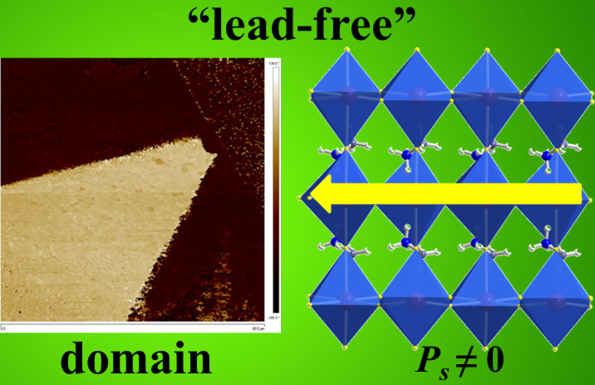
In a study published in J. Am. Chem. Soc., a research group led by Prof. LUO Junhua from Fujian Institute of Research on the Structure of Matter of the Chinese Academy of Sciences reported a potential lead-free hybrid perovskite ferroelectric semiconductor, (C4H9NH3)2(NH3CH3)2Sn3Br10.
The researchers found that this Sn-based hybrid perovskite undergoes a characteristic ferroelectric phase transition around 318 K with a relatively large spontaneous polarization of 11.76 μC cm-2. Mechanistic studies revealed that such ferroelectricity can be attributable to the synergistic effects of ordering of organic cations and stereochemically active lone-pair electrons inducing distortion of inorganic octahedral.
Besides, they observed temperature-dependent domain evolutions via polarized light microscopy and piezoresponse force microscopy, which further confirms the biaxial characteristic of (C4H9NH3)2(NH3CH3)2Sn3Br10, according to that of structure change.
This is the first example of a Sn-based hybrid perovskite semiconductor featuring ferroelectric performance. The study offers an efficient approach for exploring “green” ferroelectric semiconductors with potentially enhanced energy conversion efficiency.

Schematic illustration of (C4H9NH3)2(NH3CH3)2Sn3Br10 with PFM domain signals. (Image by Prof. LUO’s group)

86-10-68597521 (day)
86-10-68597289 (night)

52 Sanlihe Rd., Xicheng District,
Beijing, China (100864)

